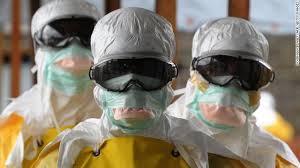Ebola & Cybergeddon: Why the Novelty Could Kill You

What does cybergeddon have to do with ebola?
In 2014 Ebola has claimed over 4,000 lives in Western Africa and caused ONE death (of a person who contracted the disease in Africa) in the United States. Many Americans are in a proper panic about it and it continues to be front page news. In typical fashion, we have found something to worry about while conveniently ignoring other, “less sensational” but more critical topics:
- According to the CDC, Influenza kills about 3,000 people in this country in a good year (1986-1987) and up to nearly 50,000 in a bad one (2003-2004). Yet during the 2013-2014 flu season, only 46 percent of Americans received vaccinations against influenza.
- Seat belts have saved an estimated 255,000 lives since 1975. Yet each year more than 50 percent of people killed in car crashes were not wearing a seat belt.
- There are more than 3.5 million cases of skin cancer and it is responsible for almost 10,000 deaths yearly. Yet take a look around on any summer day at the Americans who continue to ignore warnings to use sunscreen and hats and proudly show off their tans. (Or in the winter for those who continue to maintain their tans through tanning beds even though more people develop skin cancer because of tanning than develop lung cancer because of smoking.)
I could go on with examples of drunk driving, deaths from firearms, forgoing childhood immunizations, the American diet…
None of this is meant to lessen the horrible crisis of Ebola. We can and should pour our resources into stopping the spread of this disease, especially in Africa, where the problem is of catastrophic proportion. But one must ask, why are we not doing more to stop the things we KNOW are a REAL threat to us, when we have all the knowledge and tools to prevent them?
Our gravest health threats are those that we understand, but fail to take proper action against.
And the very same is true for cyber security and impending cybergedddon (complete destruction due to a cyber event). We focus on electronic pickpocketing because it’s novel, and forget that the same credit card that in a rare case might be scanned by a $1,000 piece of equipment should a thief manage to get within several inches of our wallet, is the same card that we already hand over to complete strangers many times per week. Corporations spend millions on software to detect digital intrusion, but don’t have the budget to train employees on how to use it properly.
The solution lies not in stopping electronic pickpocketing, but in utilizing 15-year-old technology that has been in place for decades in most developed countries (chip and pin technology, which Apple is finally mainstreaming). In cyber security, the old problems are still the biggest problems: poor passwords, unwise link clicking, something-for-nothing scams, outdated operating systems, anti-virus and mission-critical applications, and most of all, human training that would bore drying paint to tears. If cybergeddon occurs, it will be because we focused on the shiny bits rather than the substance.
Stop looking at what is gaining attention in the media, and start looking at the weak spots inside of your organization that will more quickly cure your cyber security problem.
John Sileo is a cyber security expert who focuses the human side of the equation. John specializes in making security entertaining for keynote audiences, so that it works. John is CEO of The Sileo Group, whose clients include the Pentagon, Visa, Homeland Security & Pfizer. John’s body of work includes appearances on 60 Minutes, Rachael Ray, Anderson Cooper & Fox Business. Contact him directly on 800.258.8076.
Sorry, comments for this entry are closed at this time.









No Comments Yet
You can be the first to comment!